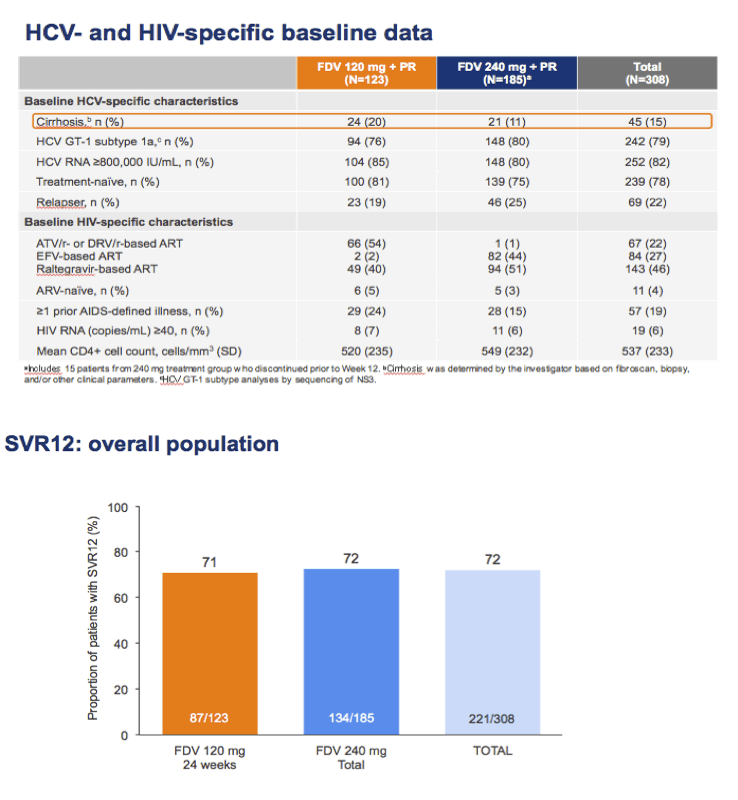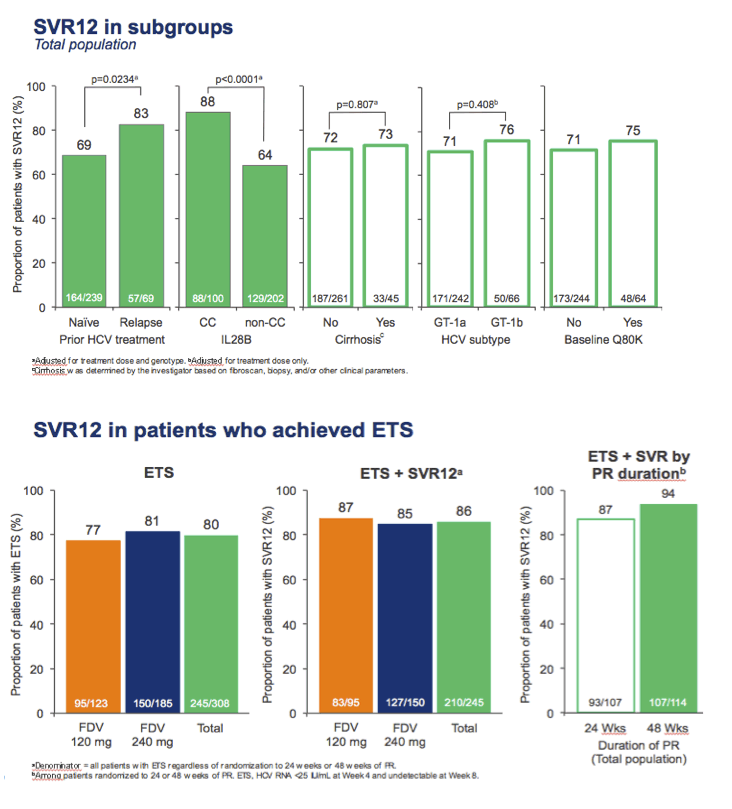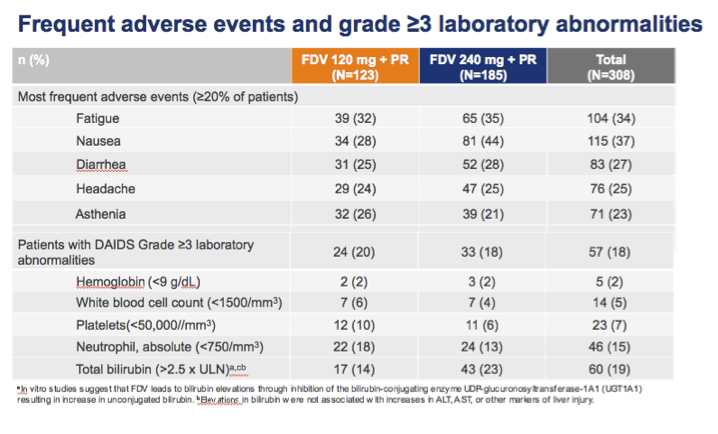 |
 |
 |
| |
SVR12 72% With Faldaprevir Plus PegIFN/RBV in Naives With HCV/HIV
|
| |
| |
CROI 2014, March 3-6, 2014, Boston
Full slide presentation follows below
Mark Mascolini
Nearly three quarters of people coinfected with HIV and HCV genotype 1 had a sustained virologic response 12 weeks after treatment ended (SVR12) with the direct-acting antiviral faldaprevir plus pegylated interferon/ribavirin (PR) [1]. SVR12 rates did not vary by HCV genotype, presence of compensated cirrhosis, or faldaprevir dose or duration.
Faldaprevir is an investigational once-daily HCV NS3/4A protease inhibitor active against HCV genotypes 1, 4, 5, and 6 in vitro. STARTVerso4 evaluated faldaprevir with PR in HIV-positive people on or off antiretroviral therapy and infected with HCV genotype 1. Participants could be naive to HCV therapy or in relapse after prior treatment.
In study arm A, participants took 120 mg of faldaprevir for 24 weeks; in arm B, they took 240 mg for 12 or 24 weeks, with the duration determined by on-treatment response. All study participants also took PR for 24 or 48 weeks, with duration also determined by on-treatment response. People not taking antiretrovirals (only 4% of participants) or taking a raltegravir- or maraviroc-based regimen were randomized to 120 or 240 mg of faldaprevir daily.
People taking efavirenz were assigned to 240 mg daily, and those taking darunavir/ritonavir or atazanavir/ritonavir were assigned to 120 mg daily.
STARTVerso4 involved 123 people taking the 120-mg faldaprevir dose (arm A) and 185 taking 240 mg (arm B). Men made up 84% of arm A and 78% of arm B. More than 80% in each arm were white; 10% in arm A and 16% in arm B were black. Most study participants (80% in arm A and 69% in arm B) were from Europe, with most of the rest from North America. Age averaged 48 years in arm A and 47 in arm B; 38% and 29% respectively had the IL28B CC genotype.
A higher proportion of people in arm A (20%) than arm B (11%) had cirrhosis. Most people in arm A (81%) and B (75%) were HCV treatment naive. Respective proportions with HCV genotype 1a were 76% and 80%.
Overall, 221 of 308 people (72%) achieved SVR12. The rate was almost identical in the 120-mg arm A (71%) and the 240-mg arm B (72%). SVR12 was significantly higher in relapsers than treatment-naive people (83% versus 69%, P = 0.023) and in people with the IL28B CC genotype versus non-CC genotypes (88% versus 64%, P < 0.0001). But response rates differed hardly at all by HCV genotype (1a or 1b), Q80K polymorphism, or cirrhosis status.
Similar proportions in arms A and B (77% and 81%) achieved early treatment response (HCV RNA below 25 IU/mL at week 4 and undetectable at week 8). And SVR12 did not differ by faldaprevir dose or treatment duration in early responders.
Almost all study participants--93% in each arm--had a drug-related adverse event. One person in each arm had to stop only faldaprevir because of an adverse event, while 7% in each arm stopped all study drugs. Researchers recorded serious adverse event rates of 14% in arm A and 8% in arm B. Only 1 person in each arm had HIV virologic failure, while a new AIDS illness developed in 1 person in arm A and 2 in arm B.
The most frequent grade 3 or 4 lab abnormalities were elevated bilirubin (14% arm A, 23% arm B), absolute neutrophil count below 750/mm3 (18% and 13%), platelets below 50,000/mm3 (10% and 6%), white blood cell count below 1500/mm3 (6% and 4%), and hemoglobin below 9 g/dL (2% and 2%). The researchers concluded that this safety profile is similar to that seen with this regimen in HCV genotype 1 patients without HIV.
Several trials of faldaprevir without interferon are under way.
Reference
1. Dieterich D, Tural D, Nelson M, et al. Faldaprevir plus pegylated interferon alfa-2a/ribavirin in HIV/HCV coinfection: STARTVerso4. CROI 2014. Conference on Retroviruses and Opportunistic Infections. March 3-6, 2014. Boston. Abstract 23.
-----------------------------
CROI webcast:
http://www.croiwebcasts.org/console/player/22172?mediaType=slideVideo&







|
| |
|
 |
 |
|
|